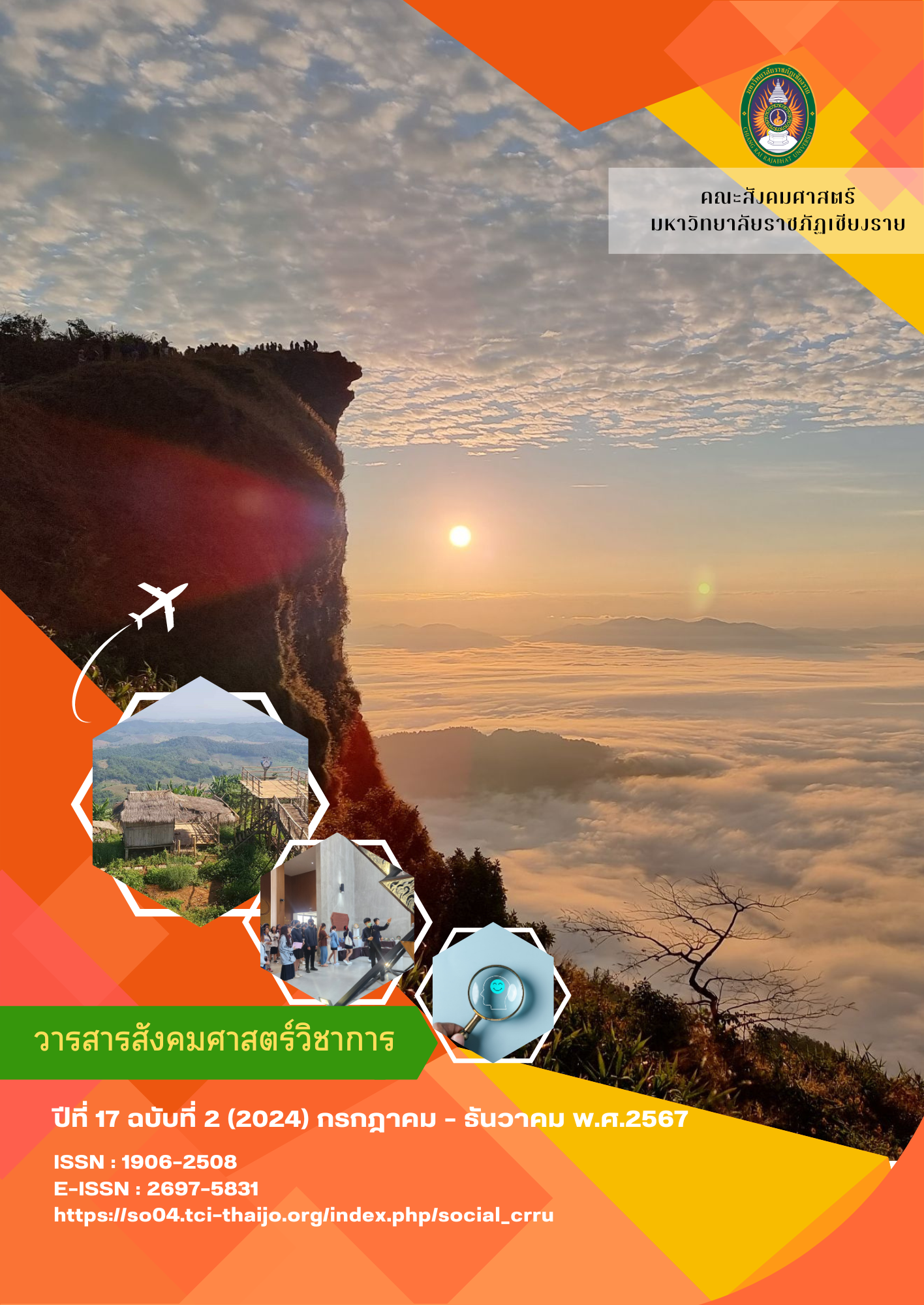เหตุใดบทละครเรื่องรามเกียรติ์ของรัชกาลที่ 1 ต้องเริ่มต้นที่ตอนหิรันตยักษ์ม้วนแผ่นดิน
Main Article Content
บทคัดย่อ
การวิจัยนี้มีวัตถุประสงค์เพื่อศึกษาคตินารายณ์อวตารกับแนวคิดการสร้างกรุงเทพมหานครและการสถาปนาพระบรมราชจักรีวงศ์ที่ปรากฏในบทละครเรื่องรามเกียรติ์พระราชนิพนธ์ของพระบาทสมเด็จพระพุทธยอดฟ้าจุฬาโลกตามแนววรรณคดีศึกษา และใช้วิธีการวิจัยเชิงคุณภาพโดยศึกษาจากเอกสาร และวิเคราะห์เนื้อหาบทละครเรื่องรามเกียรติ์พระราชนิพนธ์ของพระบาทสมเด็จพระพุทธยอดฟ้าจุฬาโลกและเอกสารอื่นที่เกี่ยวข้องตามสมมติฐานที่ตั้งไว้
ผลการศึกษาพบว่า บทละครเรื่องรามเกียรติ์พระราชนิพนธ์พระบาทสมเด็จพระพุทธยอดฟ้าจุฬาโลกเป็นนิทานพระรามฉบับไทยที่ยาวและสมบูรณ์ที่สุด แม้ว่าจุดมุ่งหมายหลักคือเล่าวีรกรรมอันกล้าหาญของพระรามในฐานะที่เป็นอวตารของพระนารายณ์ แต่ความที่เพิ่มเข้ามาในตอนต้นของรามเกียรติ์ฉบับนี้ คือ เรื่องหิรันตยักษ์ม้วนแผ่นดินซึ่งเล่าเรื่องพระนารายณ์ทรงอวตารเป็นหมูป่าลงมาปราบอสูรร้าย แล้วขวิดเอาแผ่นโลกกลับคืนมา ต่อด้วยตอนกำเนิดท้าวอโนมาตัน กุมารผู้เกิดในดอกบัวจากนาภีพระนารายณ์ ยังแฝงนัยทางการเมืองอันแยบคายเพื่อสร้างความชอบธรรมแก่ปฐมกษัตริย์แห่งราชวงศ์จักรีว่า ทรงเป็นดั่งพระนารายณ์ผู้อวตารลงมาปราบยุคเข็ญแก่ชาวสยาม และทรงสิทธิ์โดยชอบที่จะปกครองกรุงเทพมหานครในฐานะที่เป็นกรุงอยุธยาหรือเมืองพระรามแห่งใหม่แทนราชวงศ์เดิมและนครหลวงเดิมของชาวสยามที่ล่มจมไปเพราะไฟสงคราม
คำสำคัญ: รามเกียรติ์ ร. 1 หิรันตยักษ์ อยุธยา พระราม อวตาร
Abstract
This research employs a literary approach to examine the principle of Vishnu’s incarnation in the context of Bangkok’s construction and the establishment of the Chakri Dynasty, as depicted in King Rama I’s play, Ramakien. Utilizing qualitative methods, documentary research, and content analysis, the study analyzes the play and its relevant theme in line with the research objectives.
The finding reveals that the play Ramakien, composed by King Buddhayodfa Chulalok, represents the longest and most comprehensive Thai version of the Rāma story. While its main primary aim is to narrate the heroic exploits of Rāma as an avatar or incarnation of Lord Vishnu, it begins with an additional prologue about a demon named Hiranyak, who brings a dreadful calamity to humanity by rolling the earth’s surface and hiding it in the underworld. This narrative recounts Vishnu’s incarnation as a wild boar to defeat the evil demon and restore the earth. The story further introduces Anomātan, a child born from a lotus flower that emerged from Vishnu’s navel. This narrative subtly conveys political implications, legitimizing the reign of the first king of the Chakri Dynasty by portraying him as a Vishnu avatar who descends to alleviate the plight of the Siamese people. This portrayal justifies his right to rule over Bangkok as the new Ayodhyā, the city of Rāma, thereby replacing the fallen previous dynasty and capital, which had been ravaged by the fires of war.
Keywords : Ramakian, King Rama I, Hiranyak, Ayodhyā, Rāma, avatar
Article Details

อนุญาตภายใต้เงื่อนไข Creative Commons Attribution-NonCommercial-NoDerivatives 4.0 International License.
รายละเอียดของลิขสิทธ์
เอกสารอ้างอิง
Apte, V. S. (2003). The Practical Sanskrit-English Dictionary. Delhi: Motilal Banarsidass.
Bailey, G. and Brockington, M., eds. (2000). Epic Threads: John Brockington on the Sanskrit Epics. New Delhi: Oxford University Press.
Bidyalabh Bridhyakon, Prince. (1974). Collection of Royal Writings. Bangkok: Moon. (in Thai)
Brockington, John. (1998). The Sanskrit Epics. Leiden: Brill.
Buddhayodfa Chulalok, King. (1997a). Ramakian of King Rama I. Vol 1. Bangkok: Office of Literature and History. (in Thai)
———. (1997b). Ramakian of King Rama I. Vol 2. Bangkok: Office of Literature and History of Thailand. (in Thai)
———. (1997c). Ramakian of King Rama I. Vol 4. Bangkok: Office of Literature and History of Thailand. (in Thai)
Carey, P. B. R. (1984). “Jalan Maliabara (‘Garland Bearing Street’): The Etymology and Historical Origins of a Much Misunderstood Yogyakarta Street Name”. Archipel. 27: 51-62
Chulalongkorn, King. (1965). Miscellaneous Royal Writings of King Chulalongkorn. Bangkok. Railway. (in Thai)
———. (1968). “The Antiquities Investigation Society of Siam”. Silpakorn Journal. 12 (2): 42-6. (in Thai)
Fine Arts Department (FAD) of Thailand. (1995a). “Khao Kob Inscription”. in Collection of Inscriptions, Volume 8: Sukhothai Inscriptions. Bangkok: Office of Literature and History of Thailand, pp 120-6. (in Thai)
———. (1995b). “Srichum Inscription”. in Collection of Inscriptions, Volume 8: Sukhothai Inscriptions. Bangkok: National Library of Thailand, pp 98-119. (in Thai)
———. (1996a). “Chronicles of the Kingdom Ayutthaya, Luang Prasert Version”. ใน Collection of Chronicles, the Golden Jubilee Version. Vol 1. Bangkok: Bangkok: Office of Literature and History of Thailand, pp 211-33. (in Thai)
———. (1996b). “Chronicles of the Kingdom Ayutthaya, Phancandanumat (Jerm) Version”. in Collection of Chronicles, the Golden Jubilee Version. Vol 3. Bangkok: Office of Literature and History of Thailand, pp 203-452. (in Thai)
———. (1996c). “Chronicles of the Kingdom Thonburi, Phancandanumat (Jerm) Version”. in Collection of Chronicles, the Golden Jubilee Version. Vol 3. Bangkok: Office of Literature and History of Thailand, pp 469-41. (in Thai)
———. (1997). “Introductory”. in Ramakian of King Rama I. Vol 1. Bangkok: Office of Literature and History of Thailand, pp [1-9]. (in Thai)
Horne, E. C. (1974). Javanese-English Dictionary. New Haven: Yale University Press.
Kasetsiri, C. (2020). Ayutthaya: History and Politic. Bangkok: The Foundation for the Promotion of Social Sciences and Humanities Textbooks Project. (in Thai)
Laulertvorakul, A. (1990). “WanKhān: the Enjoyment Flavored by the Ramakian”. Thai Language and Literature. 7 (1): 43-8. (in Thai)
Lausunthorn, N. (1997). Narai Yi Sip Pang (The Legend of Vishnu’s Twenty Avatars) and Its Influence on Thai Culture. Bangkok: Maekhamphang. (in Thai)
Macdonell, A. A. (1981). Vedic Mythology. Delhi: Motilal Banarsidass.
Mahamakutrajavidyalai. (2022). Siam Tipitaka and Commentary Vol 60: Suttantapiṭaka Khuddakanikāya Jātaka. Vol 3 Part 3. Nakornpathom: Mahamakutrajavidyalai. (in Thai)
Mahasurasinghanad, Regent. (2002). “Song of Striking of Burma”. in Compositions of the Regents. Bangkok: FAD of Thailand, pp. 23-30.
Mongkut, King. (1912). The Royal Chronicles of the Kingdom Siam, the King Mongkut Version. Vol 3. Bangkok: Vajirayāna Library. (in Thai)
Monier-Williams, Sir Monier. (2003). A Sanskrit-English Dictionary. New Delhi: Asian Educational Services.
Narindhibet (In). (1975). Khlong Nirāt Narin. Bangkok: Educational Supplies Organization of the Teachers’ Council. (in Thai)
Nimmanhaeminda, P. (2005). “The Story of Rāma in Buddhist Literature”. The Journal of The Royal Society of Thailand. 30 (2): 459-69. (in Thai)
Pakdeekham, Santi. (2005). “Srīrāmadevanagara: an Elaborated Noun-Ending or City’s Name”. Damrong Journal. 4 (2): 156-71. (in Thai)
Phromsutthirak, M. (1987). “Is it true that ‘Narai Yi Sip Pang’ originates from the Ramakian of King Rama I?”. Art & Culture Magazine. 8 (8): 32-38. (in Thai)
———. (2004). Maneepin’s Academic Composition. Bangkok: Chulalongkorn University Press.
Raffles, T. S. (1817). History of Java. vol 1. 2nd ed. London: Gilbert and Rivington.
Saisingha, S. (2019). Dvāravatī Art. Religious Culture in the Eary History of Territory of Thailand. Nonthaburi: Muang Boran.
Sawaddipong, C. (2011). “Horamān”. Dictionary of Lanna Literature. Bangkok: Thailand Research Fund.
Singto, S. (1977). The Relationship between the Ramayana of Vālmīki and the Ramakian of King Rama I. Bangkok: Supervisory Education Unit of Thailand. (in Thai)
Skinner, G. W. (1962). Chinese Society in Thailand: an Analytical History. New York: Cornell University Press.
Thiphakorawong, Chaophraya. (2002). The Royal Chronicles of Rattanakosin, Reign of King Rama I. Bangkok: Office of Literature and History of Thailand. (in Thai)
Vajiravudh, King. (1964). Lilit Narai Sip Pang. Bangkok: Klangvidya. (in Thai)
Wallipodom, S. (2017). “Ayodhyā-Srīrāmthepnakorn”. Muang Boran Journal. 43 (1): 33-43. (in Thai)


